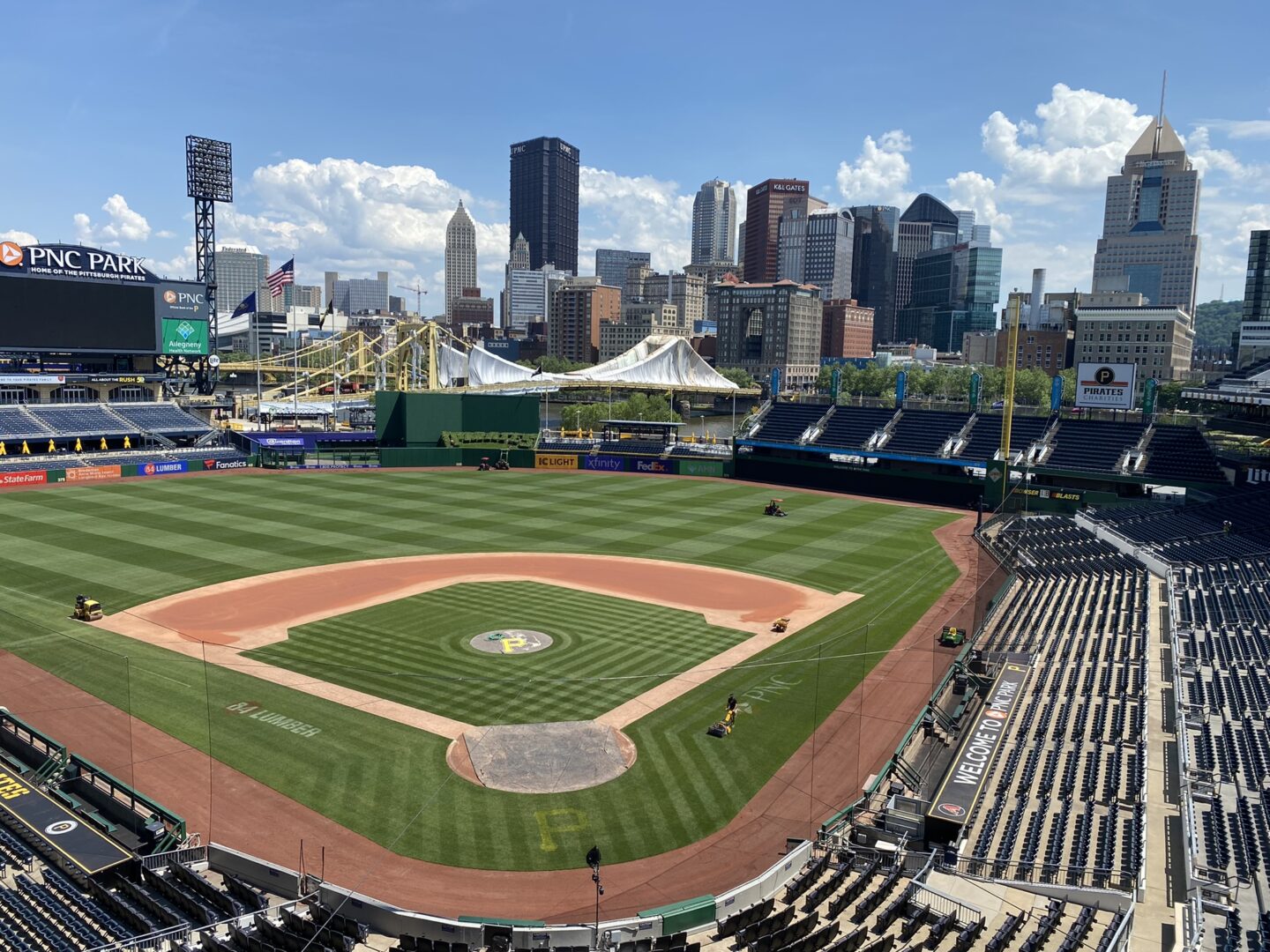
PNC Park
Katie Blackley / 90.5 WESA

PNC Park
Katie Blackley / 90.5 WESA

Katie Blackley / 90.5 WESA
PNC Park
From racing pierogies to spectacular skyline views, Pittsburgh Pirates games are staples for many city residents. Professional baseball has long been a part of the city’s culture, and many Good Question! listeners were curious about the team’s history, ballpark entertainment and modern gameplay.
“I was wondering if the Pirates were named after river pirates?” – Gil Maher, a Wilkinsburg native living in Brooklyn, NY.
Let’s go back to 1882. At the time, Pittsburgh had about 150,000 residents, the Smithfield Street Bridge was being built and a new professional baseball team was formed — one that would go on to be called the Pittsburgh Pirates.
The “Alleghenys,” or “Pittsburgh Alleghenys,” were created by manager Denny McKnight, a former iron executive. While there had been informal baseball played in the city prior to the Alleghenys, they’re considered the first professional team. They joined the new American Association league and stayed until they joined the National League in 1887. The teams played at Recreation Park and later Exposition Park on the North Side (then Allegheny City).
Three years later, a rival Players’ League formed, and many of the Alleghenys players left for the organization. According to Jim Trdinich, Pittsburgh Pirates historian and director of the Hall of Fame, the Players’ League folded after a year, and players started to trickle back to their original National League teams.
A second baseman for the Philadelphia Athletics named Louis Bierbauer, though, decided to make a leap. Instead of returning to Philly, he joined the Pittsburgh Alleghenys in 1891 and caused a major controversy.
“There was an outcry among the leagues.” Trdinich said. “They said ‘This team is pirating this guy away from the Philadelphia Athletics!’ And the name ‘Pirates’ stuck ever since.”
The team officially adopted the name for the 1891 season. Newspapers, including the former Pittsburgh Commercial Gazette, picked up the nickname as early as 1897, according to newspaper archives. Trdinich said the title appeared on uniforms around 1912, although the “P” on the logo had long been part of the team’s identity.
“The ‘P’ stands for Pittsburgh,” he said. “It’s for the city.”
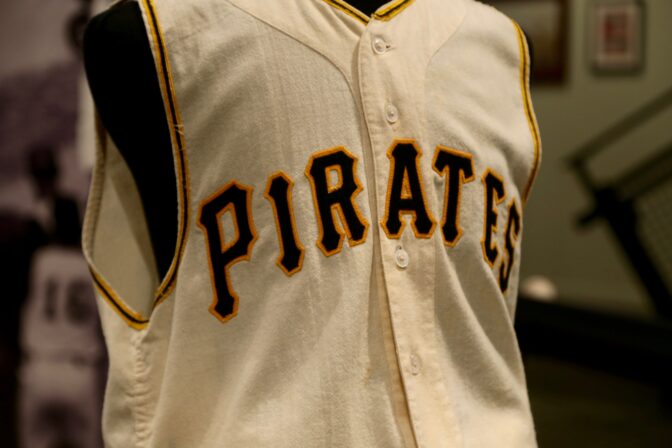
Katie Blackley / 90.5 WESA
A Pittsburgh Pirates jersey on display at the Heinz History Center’s Western Pennsylvania Sports Museum.
While the team’s name was changing, they were also bouncing around different fields. After Exposition Park (where the first modern World Series took place in 1903), they moved to Forbes Field in 1909. The ballpark in Oakland served as the Pirates’ home until 1970, and was the first home field for the University of Pittsburgh Panthers football team and the Pittsburgh Steelers. The Homestead Grays, one of two Negro League teams in Pittsburgh at the time, played there for 17 years.
The Pirates played at Three Rivers Stadium on the North Shore from 1970 to 2000 before relocating to the new 39,000-seat PNC Park in 2001.
Trdinich said one of his favorite memories of working with the team — which he’s been doing for 38 years — was the 2013 Wild Card game against the Cincinnati Reds at PNC Park. The team had just come off of 20 years of losing seasons.
“This place was rockin’,” he said. “And we won that game. There were people jumping off the Clemente Bridge, doing somersaults, which was crazy. It was a great time to be a Pirate fan.”
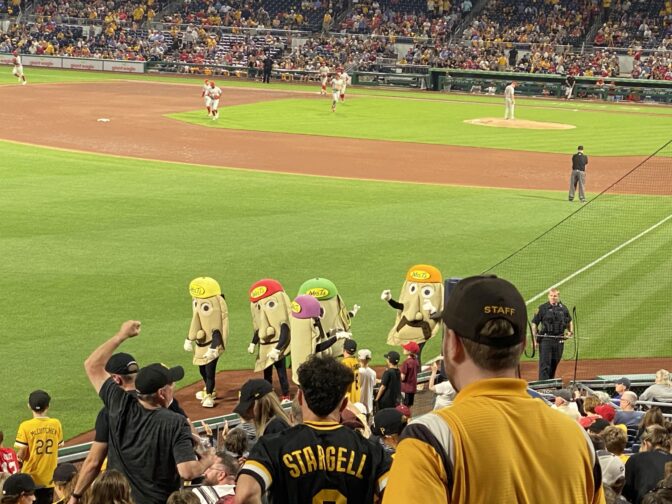
Katie Blackely / 90.5 WESA
Some the racing pierogies at a Pittsburgh Pirates game.
Pierogi races, fly balls and hot dogs
What about modern Pirates fans? Many Good Question! askers had curiosities about the entertainment at the ballpark and the experience of the game.
Lawrenceville resident Laura Everhart thinks a lot about sustainability and wondered, “How many baseballs the Pirates use each game on average?”
In Major League Baseball, balls have to be “muddied” with dirt from the Delaware River. Recently the league even instructed clubhouses exactly how to “paint” the balls before they could be used. They also have to be “authenticated.”
But Trdinich did have a number: roughly 120 on average per game.
MLB authenticators record information about every ball that’s taken out of play, including who pitched it, who hit it, and where it went. If players hit milestones (like their 100th strikeout or 1,000th hit), they’re usually given that specific ball.
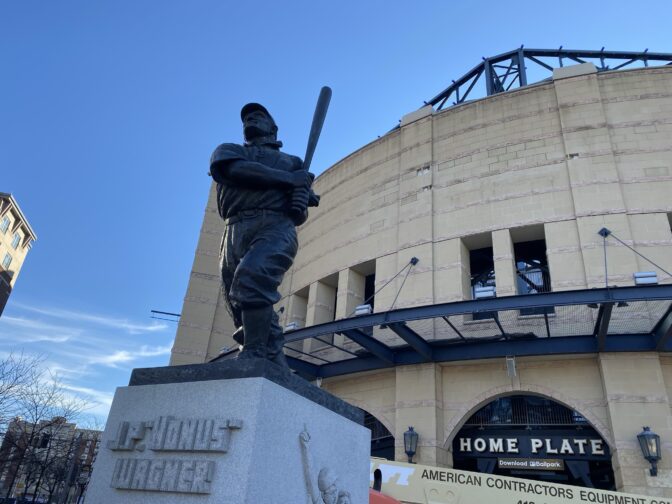
Katie Blackley / 90.5 WESA
A statue of former Pittsburgh Pirates player Honus Wagner stands outside of PNC Park.
And how many homeruns have landed in the nearby Allegheny? About 50, total, since PNC Park opened in 2001.
“We’ve only had, I wanna say four, maybe five that have landed on a fly,” Trdinich said. “And the other 45 have bounced in the river.”
Listener Matthew Guerry was curious about another object flying over crowds at games: hot dogs.
“The question I sent in was whether the hot dogs that are launched out of a cannon at PNC Park are edible or not,” Guerry asked.
Trdinich said that while the ballpark has stopped throwing hot dogs into the crowd, they were edible when the entertainment took place.
“I wouldn’t have eaten them, but they were edible,” Trdinich said, laughing.
Now, it’s mostly t-shirts in the cannons, but the park does have $1 hot dog nights each season. Special themed nights are the responsibility of the team’s entertainment division, as well as the mini-games played between innings and, of course, the racing pierogies.
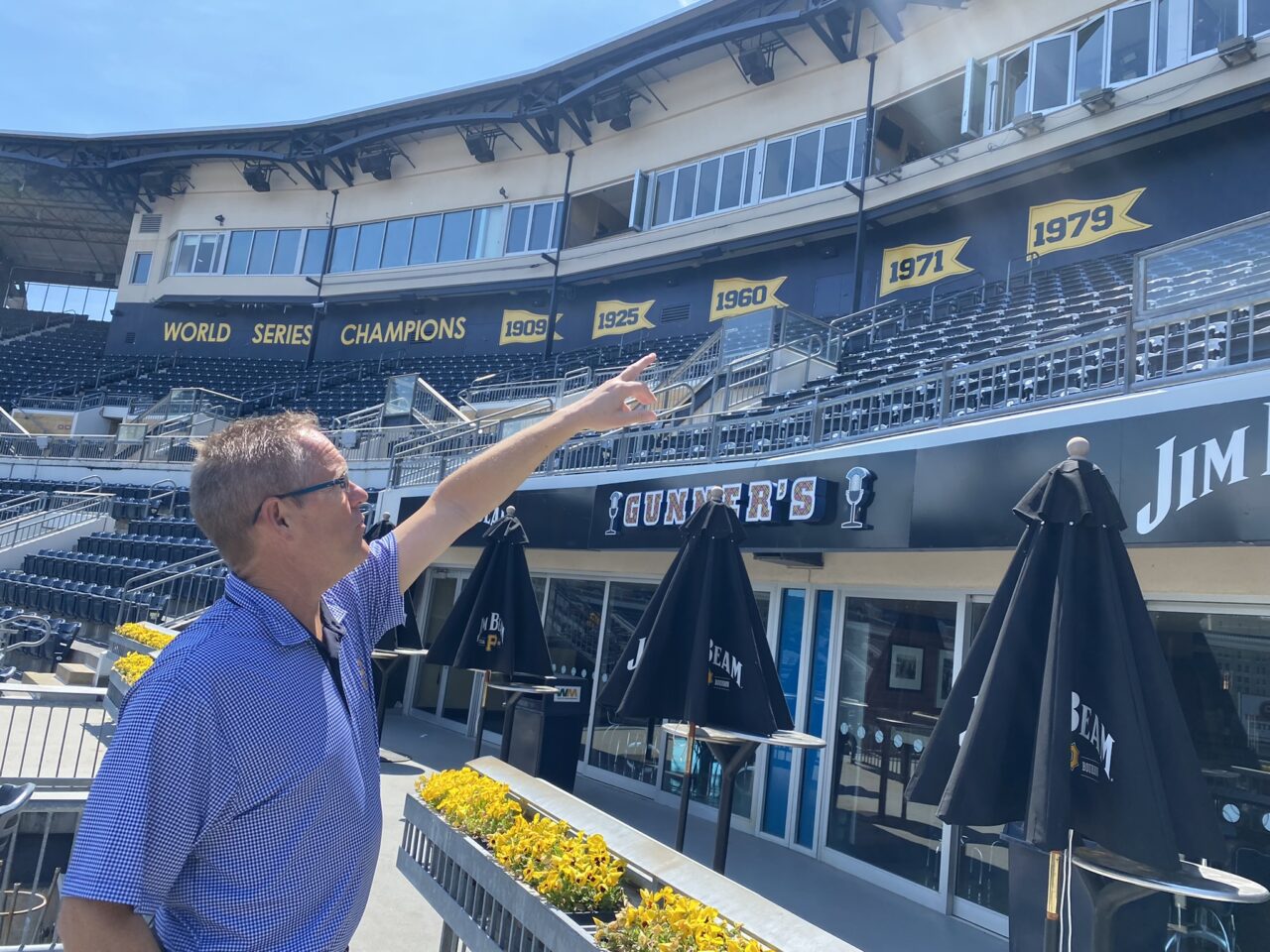
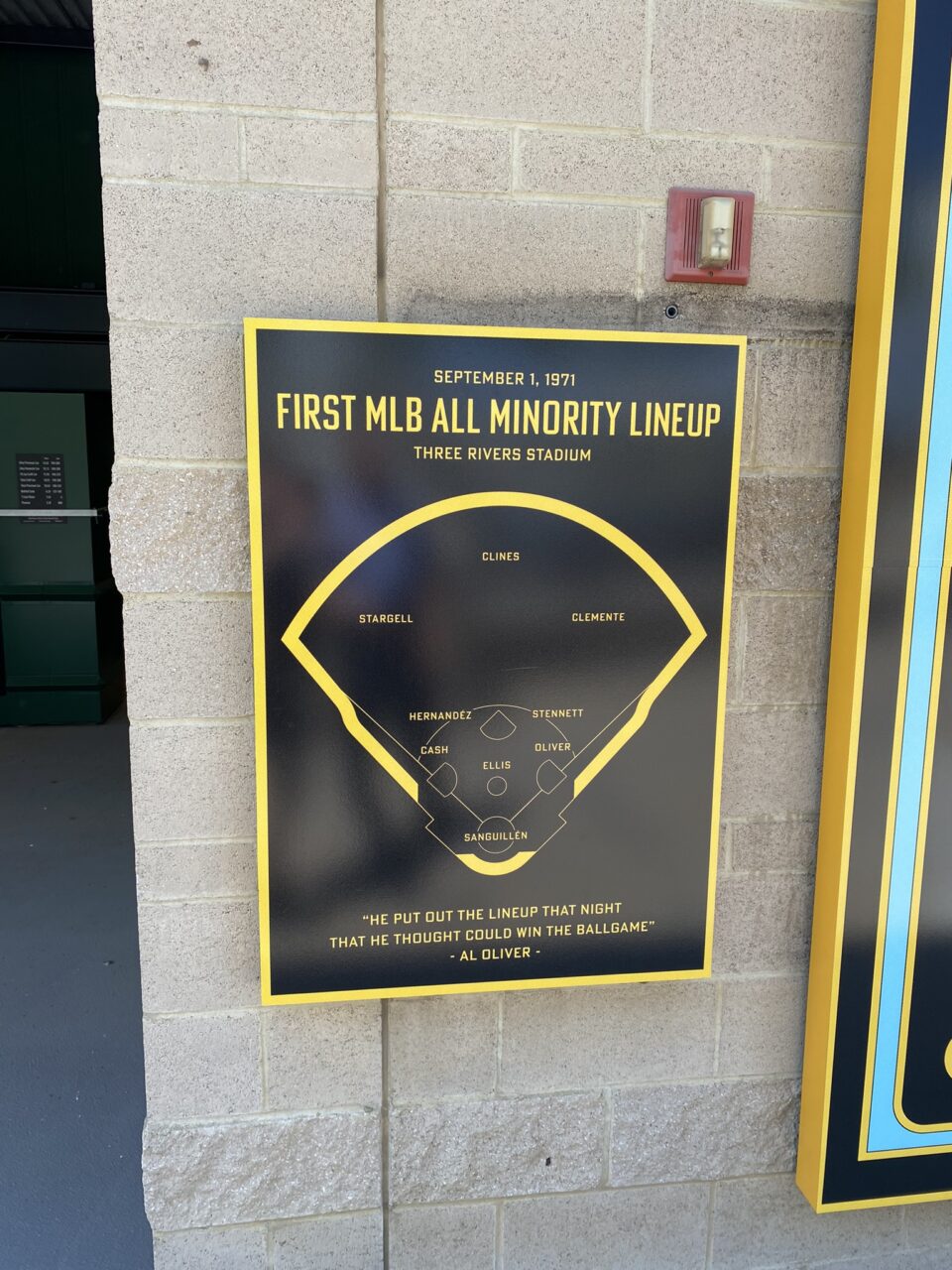
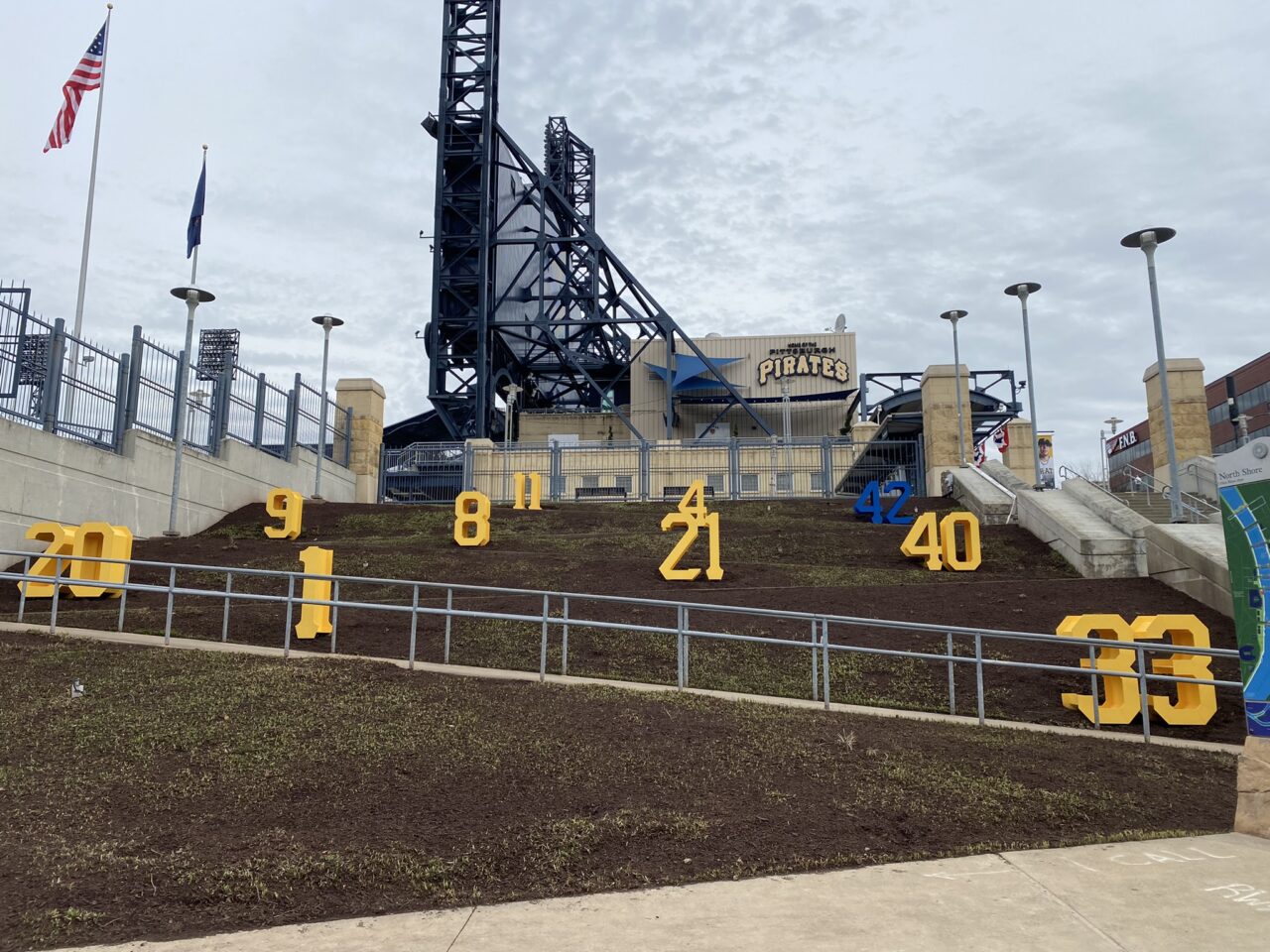
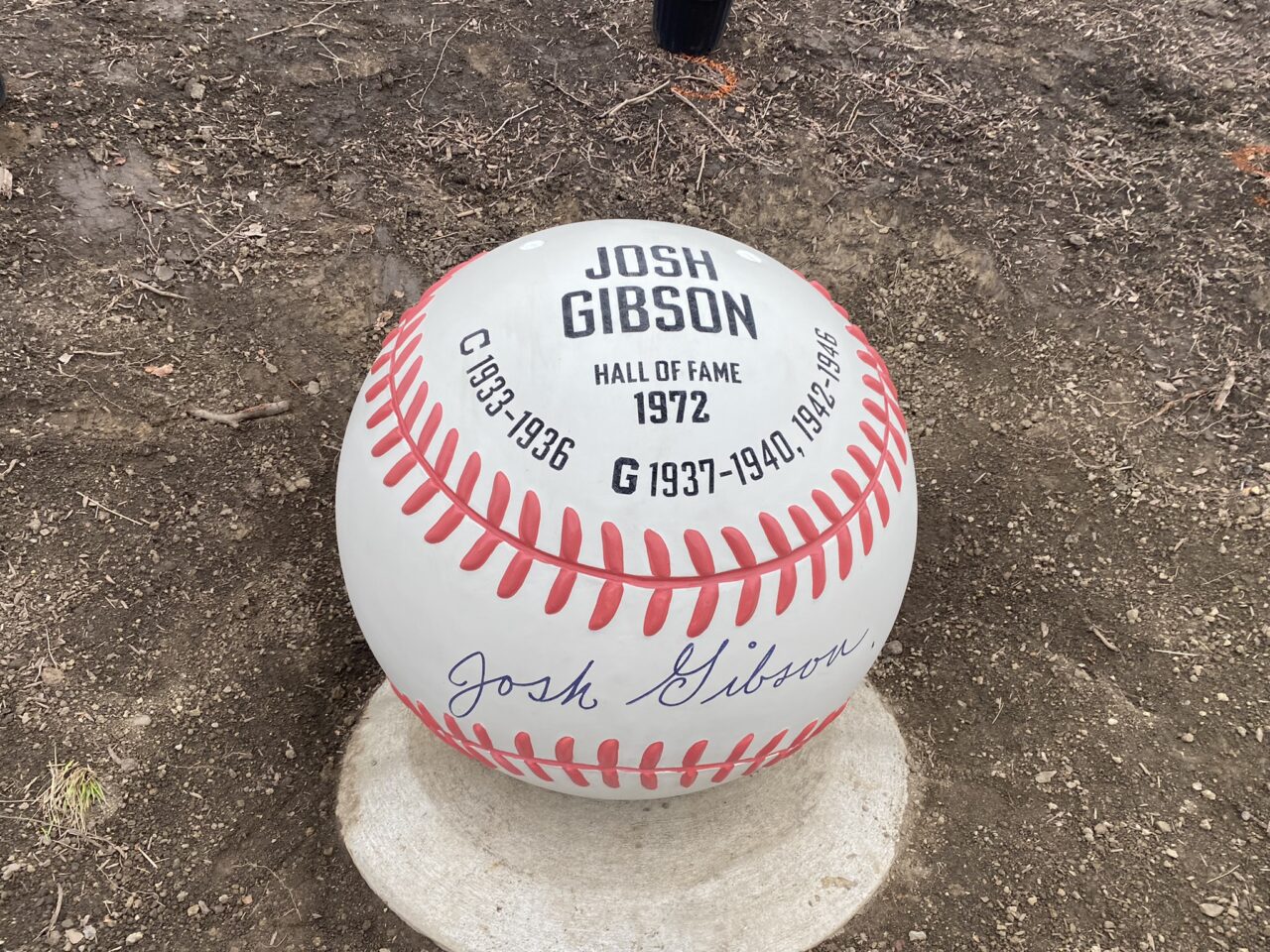
The sprinting dumplings have been part of Pirates games since the late 1990s, and Tridinich said it’s always fun to see how the team’s entertainment crew manages to keep it interesting for Jalapeño Hannah, Cheese Chester, Oliver Onion and the other racers.
“Someone’s gonna trip someone, the parrot’s gonna knock somebody out, Hannah’s gonna smack someone with her purse, you never know what’s going to happen.”

Sometimes, your mornings are just too busy to catch the news beyond a headline or two. Don’t worry. The Morning Agenda has got your back. Each weekday morning, host Tim Lambert will keep you informed, amused, enlightened and up-to-date on what’s happening in central Pennsylvania and the rest of this great commonwealth.
The days of journalism’s one-way street of simply producing stories for the public have long been over. Now, it’s time to find better ways to interact with you and ensure we meet your high standards of what a credible media organization should be.